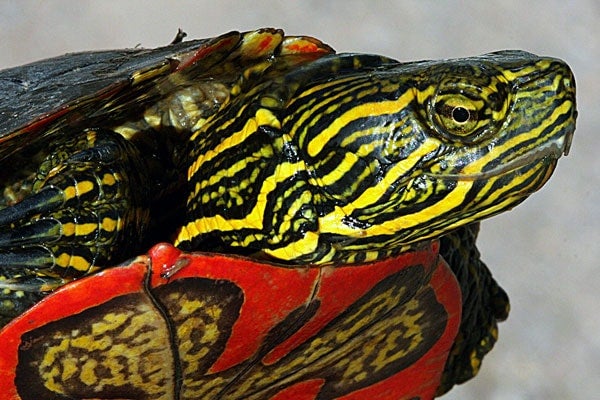
Decoding turtle genome could help human health
Published: April 24, 2013
A group of 50 researchers from around the globe, including Professor Leslie Buck from the University of Toronto and Daniel Warren from Saint Louis University (SLU) have spent the last several years sequencing and analyzing the genome of the western painted turtle.
Their research, published recently in Genome Biology, points to some important conclusions that may be important for human health.
The western painted turtle, one of the most widespread and well-studied turtles, exhibits an extraordinary ability to adapt to extreme physiological conditions. This adaptability might have a direct relevance to human health conditions, particularly those related to oxygen deprivation and hypothermia and longevity, researchers say.
“This remarkable turtle has the ability to survive without oxygen longer than any other air-breathing vertebrate for as long as four months when they overwinter under the ice of their frozen ponds,” said Warren. “Many human diseases, however, involve tissue damage caused by oxygen deprivation, such as occurs with stroke and heart attack.”
Their study identified the genes in the turtle’s heart and brain that might account for the abilities to avoid this tissue damage.
“We focused our efforts especially on those genes that are also present in our own human genome," said Warren.
“The turtle’s brain naturally survives without oxygen (anoxia) during this period and this makes it a great model to study the ways we can protect human brain from the debilitating effects of stroke,” said Buck. “When faced with low oxygen conditions the turtle rapidly lowers metabolism by over 90 per cent, similar to the effect of anesthetics during human surgeries. There also may be a natural anesthetic model in which we can explore safer forms of anesthesia.
“Our RNA sequencing data in the genome paper reveals over 13000 genes in common with humans and 19 genes that increase their activity in turtle brain and 23 in heart following 24 hours of anoxia. One even increases 130 fold above controls giving us excellent leads to follow in our study of the mechanisms underlying natural anoxia tolerance,” added Buck.



